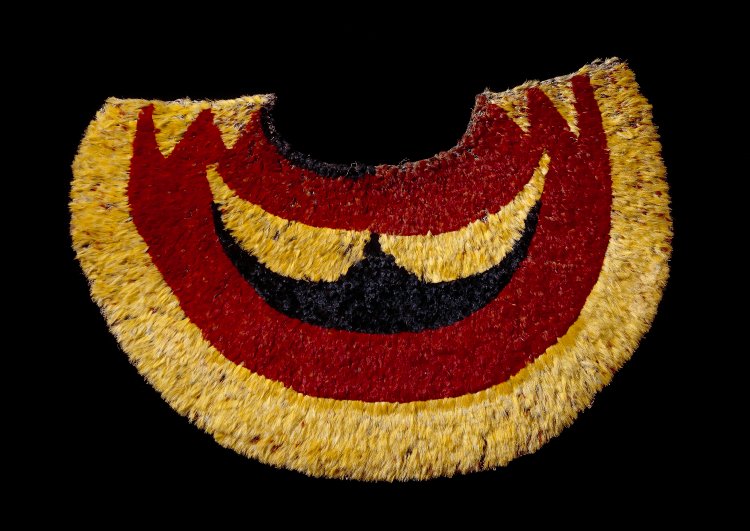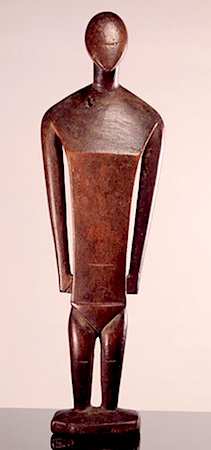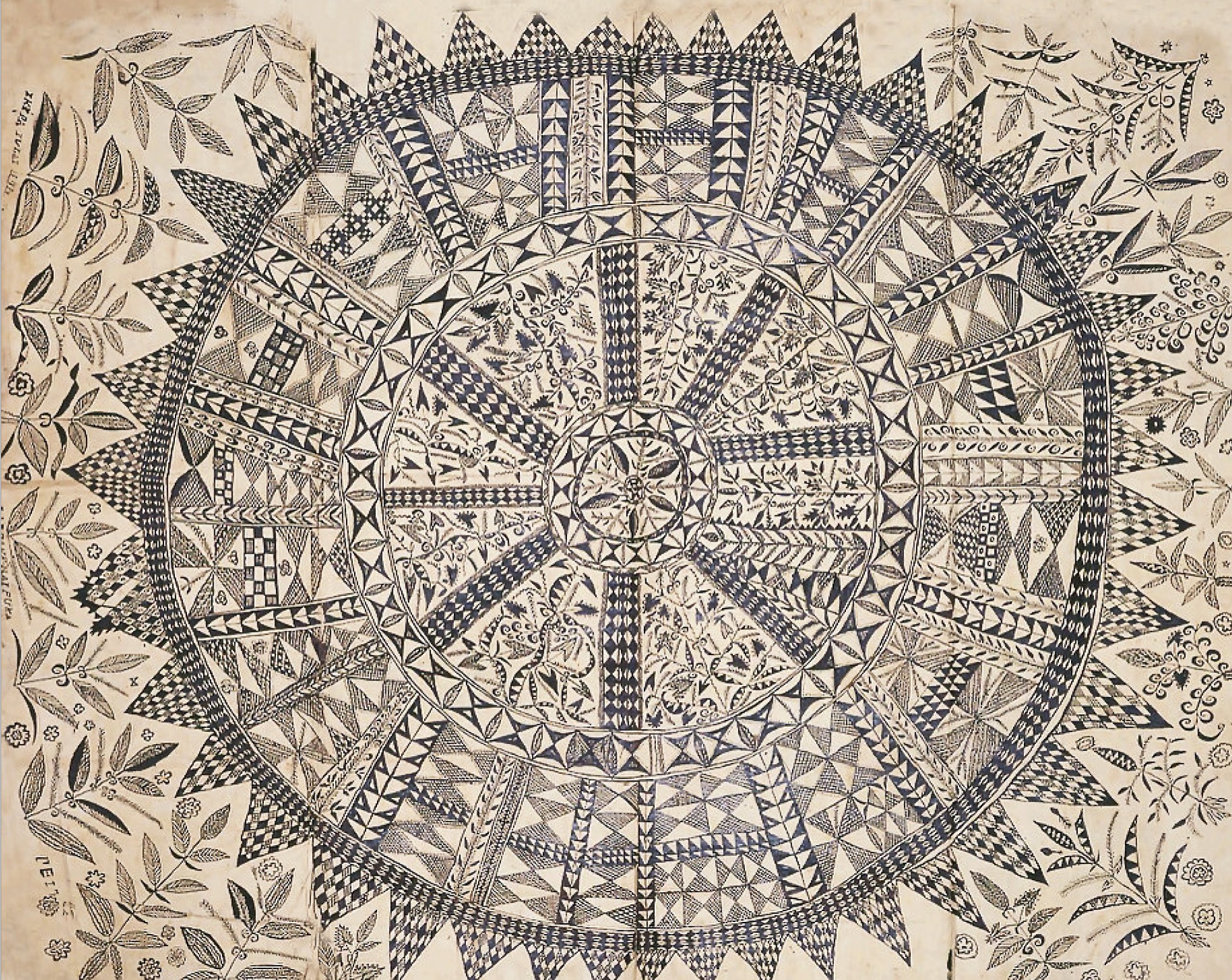<< Hide Menu
9.1 Materials, Processes, and Techniques in Pacific Art
2 min read•june 18, 2024
Sylvia Rodriguez
Sylvia Rodriguez
The culture of the Hawaiian islands is steeped in ancient traditions and beliefs. From the beautiful feather capes worn by Hawaiian royalty to the sacred tapa cloth and the powerful female deities, Hawaiian culture is filled with meaningful objects and symbols. In this study guide, we will explore the significance and history of the ahu 'ula (feather cape), female deity, and hiapo (tapa).
Ahu 'ula (Feather Cape)

Feather cape**, probably before 1850 C.E., olona fibre, feather, 68.5 x 45 cm, Hawaii © Trustees of the British Museum**
- Ahu 'ula is a traditional Hawaiian feather cape, worn by high-ranking Hawaiian ali’i (royalty).
- It is made from the feathers of the mamo, a small Hawaiian honeycreeper bird.
- The feathers are sewn or tied together and can range in size from small, one-person capes to large, floor-length capes.
- Ahu 'ula are typically worn with a mahiole (a feathered helmet) and a pā‘ū (a type of skirt).
- Ahu 'ula are considered to be a symbol of power and prestige in Hawaiian culture.
Female Deity

Female Figure, Nukuoro, Caroline Islands, Micronesia, 18th-19th century, wood, 40.2 cm high (Barbier-Mueller Museum)
- Hawaiian mythology includes numerous female deities, or akua.
- Some of the most important female deities include Pele (goddess of volcanoes and fire), Hina (goddess of the moon), Laka (goddess of hula and dance), and Haumea (goddess of fertility and childbirth).
- Female deities are believed to bring good luck, protection, and abundance to those who venerate them.
Hiapo (Tapa)

Hiapo (tapa), Niue, c. 1850–1900, Tapa or bark cloth, freehand painting (Aukland War Memorial Museum)
- Hiapo is a traditional form of Hawaiian tapa cloth.
- It is made from the bark of the wauke tree, which is beaten and pounded into a thin sheet.
- Hiapo can be decorated with geometric patterns, plants, and animals, and is often used as a canvas for art.
- Hiapo is believed to have spiritual significance and is often used in ceremonies and rituals.
The ahu 'ula (feather cape), female deity, and hiapo (tapa) all have a deep significance in Hawaiian culture, and they continue to be revered and honored today. These objects and symbols are important reminders of the rich and vibrant culture of the Hawaiian islands. They serve as symbols of power, prestige, protection, and abundance, and their symbolism has been passed down through generations.

© 2024 Fiveable Inc. All rights reserved.